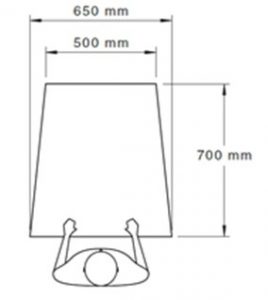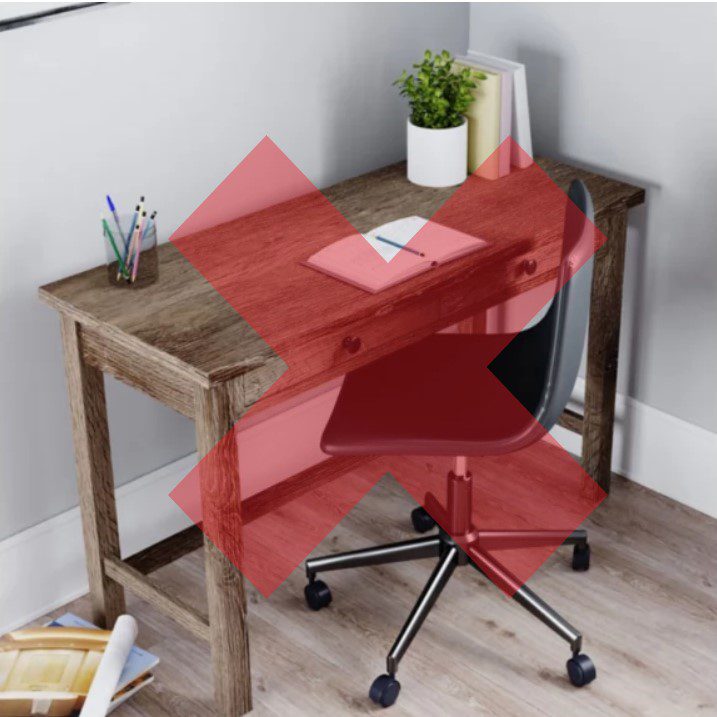A common theme that I notice when I perform a home office ergonomic assessment is that quite often the desk is the wrong size for the task/s being performed. It seems like quite a simple thing, and for the most part my clients feel that they are able to work around it. However, ensuring that you have sufficient space to position your equipment correctly and complete the jobs that you need to do can make a huge difference to your working comfort and lower your risk of injury. This is becoming more important as the time spent working at home is increasing.
In fact, there are Australian Standards that are applicable to the size of desks and workstations in an office situation, and in reality there is no reason why these same Standards should not apply to the home-based setup as they do to a more formal workplace (even if there is not always a clear requirement to do so).
According to AS/NZS 4442:2018 – Australian/New Zealand Standard for Office desks, office workstations and tables intended to be used as office desks – Mechanical, dimension all and general requirements and test methods there needs to be a designated working position at each desk in a trapezium shape that measures 650mm wide at its front surface (i.e. closest to you) and 500mm wide at a distance of 700mm between the bases. This is where you position your computer equipment and complete your main work tasks.

For single task work the primary worktop should have greater than or equal to 1200 mm of working edge length with a minimum depth of 600 mm (although must maintain the 700 mm depth at the designated working position – a standard rectangular shaped desk makes this simpler). If you perform mixed work tasks then the working edge length should increase up to 1600 mm.
What about corner or L-shaped desks? Well, similar principles apply. You need to meet the same designated working position dimensions and working edge length (it’s a bit more complicated than a rectangular desk – it would be easier for me to discuss this with you). There is also a range of desk heights that is recommended for all desk shapes – 710-770mm.

What I commonly see are smaller desks purchased from large retail outlets that have a depth of 600 mm (or less in some cases) and may only be up to 1000 min length. These clearly do not meet the indicated Standards and in reality do not provide sufficient space for adequate placement of the computer monitor, keyboard/mouse or other items such as documents, notebooks, etc that might be regularly worked on.
This is such a simple thing to get right and can ensure that you are able to complete the required tasks at your office workstation in a more suitable ergonomic posture. Have a look at the desk that you currently have and measure it to ensure that it meets these Standards – if it does not then replacing this desk this should be the first step you take in helping to ensure that you remain healthy at the workplace.
Ergo Experts can provide advice and guidance in relation to safe ergonomic workstation setup at both the home and office – please contact us on 0409 512 434 for a free no-obligation discussion regarding your current situation, or email us at info@ergoexperts.com.au. If needed we can discuss how a full ergonomic workstation assessment of your home office might benefit you.





